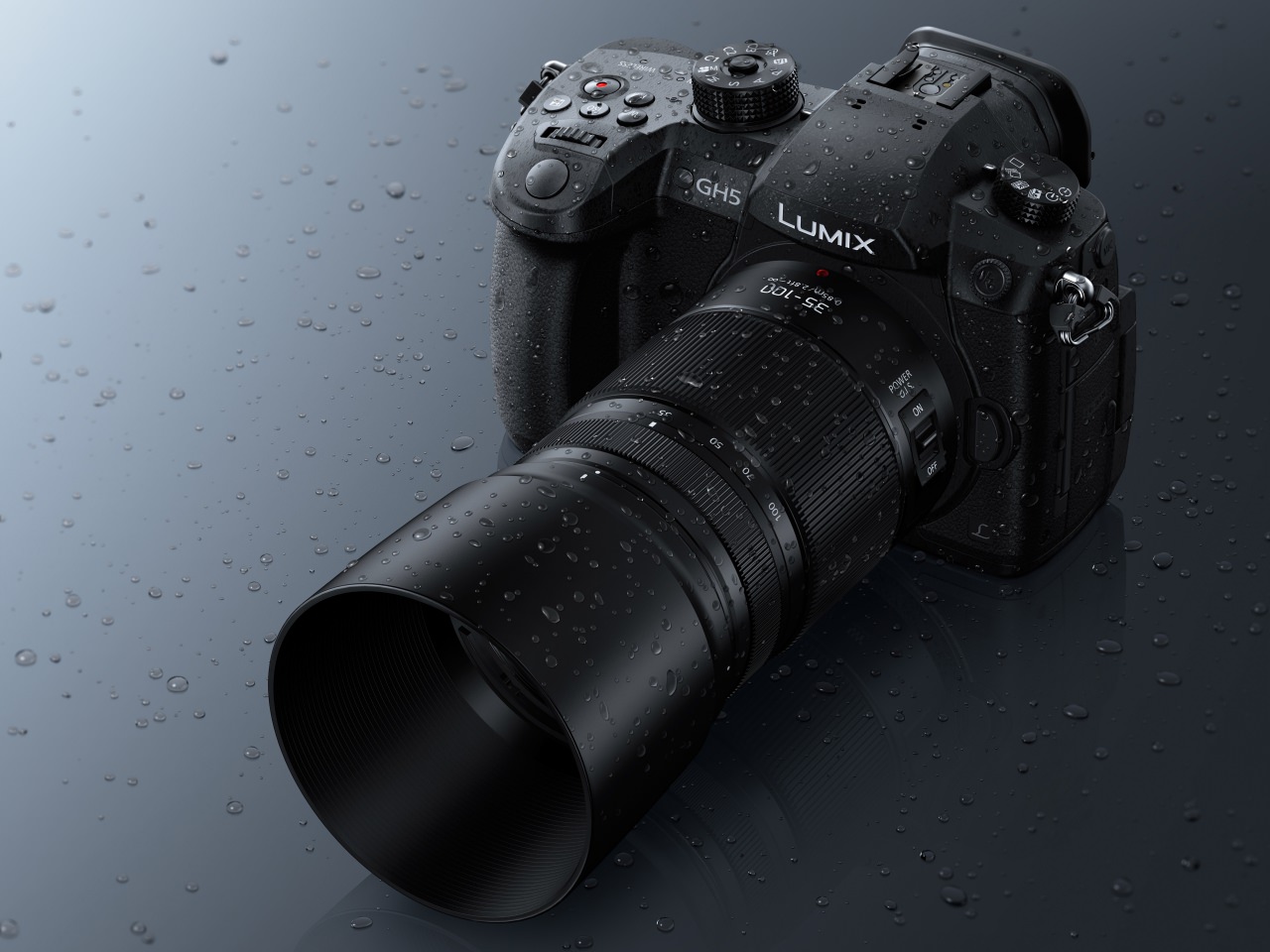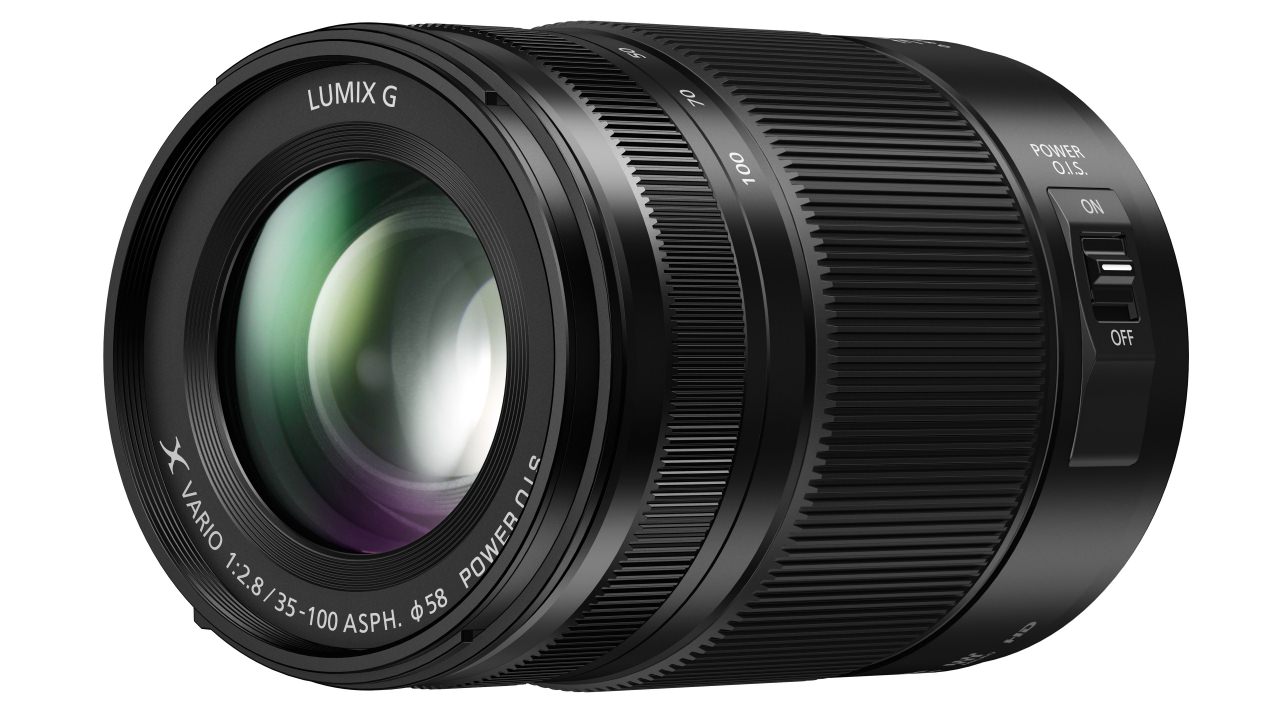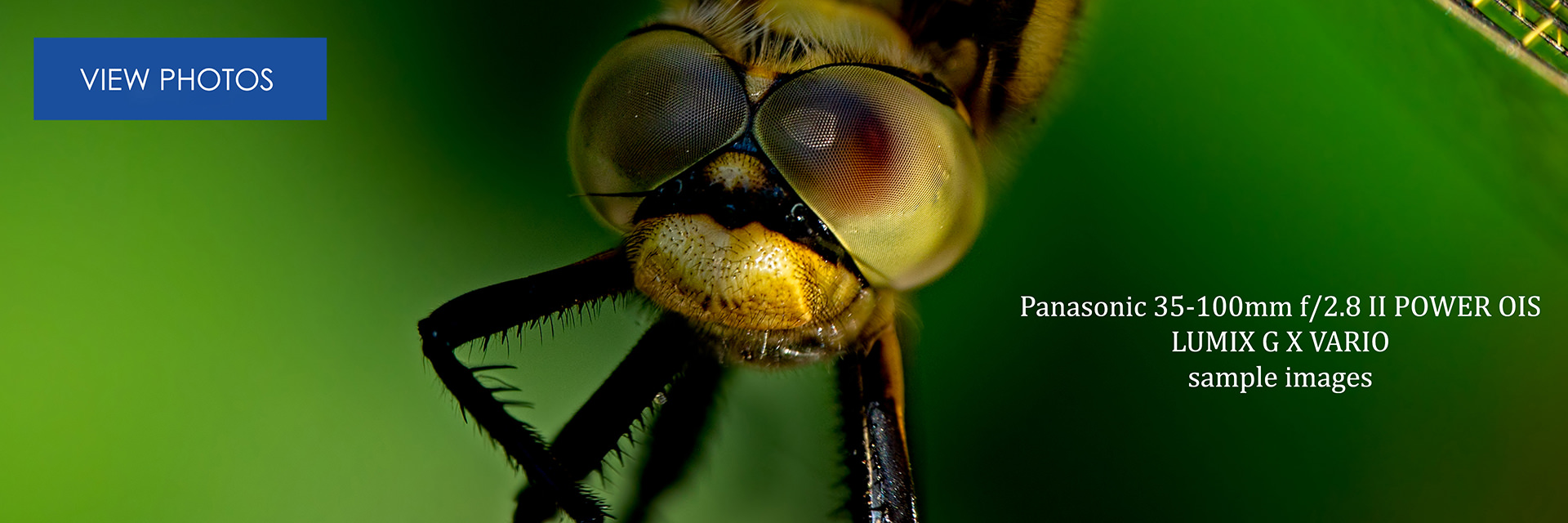Panasonic Lumix G X Vario 35-100mm F/28 Ii Power Ois Lens Review

Pocket telephoto: Panasonic 35-100mm f/two.8 Ii POWER OIS LUMIX G Ten VARIO
The lens proper noun, Panasonic 35-100 mm f/2.viii mm II Power OIS Lumix GX Vario, is almost longer than the lens itself. The Panasonic 35-100 mm f/two.8 2 is a compact telephoto lens with an field of view that matches that of a 70-200 mm lens on 35mm. That is a range that has been very popular for years. On the short side, around twoscore to 50 mm, you can apply the lens very nicely for portraits. You then stand at a pleasant working distance, and you lot do not get any weird distortions in faces. On the long side, at 100mm, you have a real 4x telephoto with which you tin portray subjects very large and tin can create a prissy, flat perspective. Thank you to the wonderful brightness of f/ii.viii, you likewise get a cute bokeh with this lens. Of form, that is not as buttery soft as the bokeh that you lot get with a 70-200 mm f/2.eight on full frame. But bokeh is non solely the result of the effulgence. The lens design too has an influence on this, and the design of the 35-100 mm f/2.8 is such that the groundwork blur is nice and soft. That lens pattern is non changed in the new version. This lens has e'er been 1 of the sharpest zooms Panasonic had in its range. What has changed is the appearance and the prototype stabilization. The lens is now – finally – just blackness. Panasonic has finally abandoned the foreign metal purple glow of the previous version. Functionally more important is that the image stabilization has been modified. This allows the new 35-100 mm f/2.eight II to cooperate optimally with the Dual IS of the almost modern Panasonic cameras.
BUILD AND autofocus

The Panasonic 35-100 mm f/2.8 II is a real meaty telephoto, with a length of just under 10 centimeters. Fifty-fifty better is that this length does not change with either both zooming or focusing. Everything happens internally. With a diameter of but under 68mm, the lens is also adequately slim. And talking most slim, at 380 grams, this is a telephoto zoom that has been on a serious diet. All the same this is non a typical, plastic consumer zoom. The housing is largely made of loftier-quality plastics, though, but the tolerances are very shut. And with f/two.viii, this lens is fairly brilliant, and the lens maintains that brightness over the entire range. The 35-100 mm f/2.eight Two is as well completely weatherproof. The versions we accept reviewed have been tested under very diverse conditions, like hiking on a glacier in Republic of iceland with frozen rain blowing horizontally beyond the plains while the camera cheerfully hangs over the shoulder, without any problem. This is one of those lenses within the Micro Four Thirds system that you can use professionally in places where yous would rather not take any heavier equipment with yous. The finish of the lens is a nice matte blackness, without even a red or gold border with which other brands like to adorn their top quality lenses. Together with the compact dimensions, this ensures that the 35-100 mm f/2.viii Ii is a nicely inconspicuous lens.

Autofocus
Functionally, Panasonic has changed two things. The first is the autofocus. That is quiet and very fast, thanks to the linear micromotor and fast command upwards to 240 times per second. To take full advantage of this, you obviously need a modernistic body that supports this fast control. Panasonic also claims to have improved the command of the aperture. We have not noticed much from this in our tests, only certainly for film work these little things can help.
v-AXIS Epitome STABILIZATION
The other large change is the adjustment of paradigm stabilization. The original 35-100 mm also had optical image stabilization, which could as well work together with the built-in image stabilization of Panasonic cameras. But the arrival of Dual IS 2 in the latest Panasonic bodies with v-axis image stabilization also placed new demands on the prototype stabilization of the lens. The graph below shows the gain from only the optical image stabilization of the lens, and that is a adept 3 stops. In combination with the v-centrality image stabilization of the latest Panasonic cameras such as the G9 and GX9, almost twice that is doable, and y'all tin get stabilization in video that almost matches that of a tripod, although that is normally not for very extended periods.
IMAGE QUALITY
The image quality of the 35-100 mm f/two.8 was already practiced in version i and withal is in version Ii. If we place the graphs for both lenses side by side, we encounter higher results for the new version. That is not so much because of an improved pattern, but considering we tested the new lens on a new 20 megapixel camera. With lesser lenses, a trunk with more than pixels ofttimes creates bigger differences between the eye (which does benefit from the actress resolution) and the corners (which lag behind). That is not the case with the 35-100 mm. The sharpness increases both in the centre and the corners. The corners are, though, less than the middle at almost all apertures. In the short range, the lens is more uniform than at the longer focal lengths, where the difference between the center and the corners is certainly larger at the full opening. At the longer focal lengths, it is best to stop down at to the lowest degree 1 or two stops for the best result.
The distortion is minimal in the photos, almost 0, because it is already corrected in the photographic camera. That does not mean that the lens has no distortion. Far from it, even. The measured distortion is quite a bit for a telephoto zoom. The correction thereof is not lossless. It is difficult to say how big the loss is. If you can give the design sharper corners by accepting some distortion (which y'all then recalculate), then that may ultimately exist meliorate than designing a lens that has no distortion simply has corners that are not as adept, due to a more circuitous pattern. What ultimately counts is that the corrections in the camera provide an almost distortion-complimentary epitome.

What also contributes to the overall impression of a high image quality is the minimal presence of chromatic aberrations. In the Panasonic bodies they are, insofar as they exist, also corrected in the camera. Those who piece of work with older Olympus models volition have to practise that in mail service-processing. But even without post-processing or correction in the camera, you have to look closely to come across any of it. The bokeh is by and large pretty prissy. Of course, you cannot compare an f/2.eight for Micro Iv Thirds with an f/ii.8 for 35mm. Because you are shooting with a 100mm on Micro Four Thirds, where yous need a 200mm on 35mm for the same picture, you also have more depth of field, and the background becomes visible more chop-chop or is sometimes even restless when y'all have a lot of small branches or something like in frame. But in general, you can get a prissy bokeh with this 35-100 mm f/ii.8, and the lens is great for portraits with a soft background.

ConclusiON: REVIEW Panasonic 35-100mm f/2.eight Ii POWER OIS LUMIX Thou X VARIO
PROS
- Fantastic image quality
- Weatherproof
- Very good paradigm stabilization
- Constant length and f/2.viii brightness
- Nicely meaty and lite
CONS
- Price close to 1,000 euros
- Shortest setting distance could have been shorter
Source: https://camerastuffreview.com/en/review-panasonic-35-100mm-f-2-8-ii-power-ois-lumix-g-x-vario/

Post a Comment for "Panasonic Lumix G X Vario 35-100mm F/28 Ii Power Ois Lens Review"